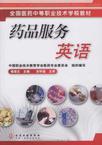药品服务英语
2009-9
化学工业出版社
侯居左 编
128
本套教材自2004年以来陆续出版了37种,经各校广泛使用已累积了较为丰富的经验。并且在此期间,本会持续推动各校大力开展国际交流和教学改革,使得我们对于职业教育的认识大大加深,对教学模式和教材改革又有了新认识,研究也有了新成果,因而推动本系列教材的修订。概括来说,这几年来我们取得的新共识主要有以下几点。 1?明确了我们的目标。创建中国特色医药职教体系。党中央提出以科学发展观建设中国特色社会主义。我们身在医药职教战线的同仁,就有责任为了更好更快地发展我国的职业教育,为创建中国特色医药职教体系而奋斗。 2?积极持续地开展国际交流。当今世界国际经济社会融为一体,彼此交流相互影响,教育也不例外。为了更快更好地发展我国的职业教育,创建中国特色医药职教体系,我们有必要学习国外已有的经验,规避国外已出现的种种教训、失误,从而使我们少走弯路,更科学地发展壮大我们自己。 3?对准相应的职业资格要求。我们从事的职业技术教育既是为了满足医药经济发展之需,也是为了使学生具备相应职业准入要求,具有全面发展的综合素质,既能顺利就业,也能一展才华。作为个体,每个学校具有的教育资质有限。为此,应首先对准相应的国家职业资格要求,对学生实施准确明晰而实用的教育,在有余力有可能的情况下才能谈及品牌、特色等更高的要求。 4?教学模式要切实地转变为实践导向而非学科导向。职场的实际过程是学生毕业就业所必须进入的过程,因此以职场实际过程的要求和过程来组织教学活动就能紧扣实际需要,便于学生掌握。 5?贯彻和渗透全面素质教育思想与措施。多年来,各校都十分重视学生德育教育,重视学生全面素质的发展和提高,除了开设专门的德育课程、职业生涯课程和大量的课外教育活动之外,大家一致认为还必须采取切实措施,在一切业务教学过程中,点点滴滴地渗透德育内容,促使学生通过实际过程中的言谈举止,多次重复,逐渐养成良好规范的行为和思想道德品质。学生在校期间最长的时间及最大量的活动是参加各种业务学习、基础知识学习、技能学习、岗位实训等都包括在内。因此对这部分最大量的时间,不能只教业务技术。在学校工作的每个人都要视育人为己任。教师在每个教学环节中都要研究如何既传授知识技能又影响学生品德,使学生全面发展成为健全的有用之才。 6?要深入研究当代学生情况和特点,努力开发适合学生特点的教学方式方法,激发学生学习积极性,以提高学习效率。操作领路、案例入门、师生互动、现场教学等都是有效的方式。教材编写上,也要尽快改变多年来黑字印刷,学科篇章,理论说教的老面孔,力求开发生动活泼,简明易懂,图文并茂,激发志向的好教材。根据上述共识,本次修订教材,按以下原则进行。 ①按实践导向型模式,以职场实际过程划分模块安排教材内容。 ②教学内容必须满足国家相应职业资格要求。 ③所有教学活动中都应该融进全面素质教育内容。 ④教材内容和写法必须适应青少年学生的特点,力求简明生动,图文并茂。 从已完成的新书稿来看,各位编写人员基本上都能按上述原则处理教材,书稿显示出鲜明的特色,使得修订教材已从原版的技术型提高到技能型教材的水平。当前仍然有诸多问题需要进一步探讨改革。但愿本批修订教材的出版使用,不但能有助于各校提高教学质量,而且能引发各校更深入的改革热潮。 四年多来,各方面发展迅速,变化很大,第二版丛书根据实际需要增加了新的教材品种,同时更新了许多内容,而且编写人员也有若干变动。有的书稿为了更贴切反映教材内容甚至对名称也做了修改。但编写人员和编写思想都是前后相继、向前发展的。因此本会认为这些变动是反映与时俱进思想的,是应该大力支持的。此外,本会也因加入了中国职业技术教育学会而改用现名。原教材建设委员会也因此改为常务理事会。适值本批教材修订出版之际,特此说明。
本书以药学服务所涉及的英语为主题,围绕这一主题,从以下十项内容展开:接待顾客用语;用英语接听记录电话;推荐并介绍药品;药品咨询服务;具体用药咨询;药品询价及成交;药物保管;药品副作用;处方药和非处方药;医疗问诊。针对每部分内容,本书都提供了典型的英语情景对话、词汇注释、语法注释、语法、关键句型、相关阅读理解与练习等材料。本书适用于医药专业的职业学校学生和医药领域的在职人员学习使用。
Module One Attending Customers 接待顾客 Part ⅠDialogues Part ⅡBasic Knowledge Part ⅢSupplementary Reading Part ⅣActivities Part ⅤExercises Module Two Telephone Conversation 接听电话 Part ⅠDialogues Part ⅡBasic Knowledge Part ⅢSupplementary Reading Part ⅣActivities Part ⅤExercises Module Three Recommending Medicines and Providing Instructions to Customers 推荐并介绍药品 Part ⅠDialogues Part ⅡBasic Knowledge Part ⅢSupplementary Reading Part ⅣActivities Part ⅤExercisesModule Four Consulting a Pharmacist1 咨询服务 Part ⅠDialogues Part ⅡBasic Knowledge Part ⅢSupplementary Reading Part ⅣActivities Part ⅤExercisesModule Five Consulting a Pharmacist2 具体用药咨询 Part ⅠDialogues Part ⅡBasic Knowledge Part ⅢSupplementary Reading Part ⅣActivities Part ⅤExercisesModule Six Inquiring and Payment 询价及成交Module Seven Storage of Medicines 药物保管Module Eight Adverse Reaction of Medicines 副作用Module Nine Prescription Medicines and NonPrescription Medicines 处方药和非处方药Module Ten Diagnosis at the Hospital 医疗问诊Appendix 1 常用药物Appendix 2 药物的剂型Appendix 3 处方用拉丁语Appendix 4 词汇参考文献
This indiefttes that the publics chronic complaints about increasingly unbearable medi-cal bills have caught policy-makersattention. UnfortUnately,much 1ike the unruly stone that frustrated Sisyphus in Greek mythologY,drug prices in the country always find a way to spring back immediately after each roundof price cuts. It was reported that the average price of 99 antimicrobial drugs would decrease by 30 per cent,and annual savings from the price cut are estimated at 4.3 billion yuan(US$54 million). To ensure that hospitals,the countrys main distribution channel for drugs,will keepto the new prices,the commission also vowed to inspect them very soon. By applying for the approval of“new drugs,”pharmaceutical plants can easily circum-vent the price cuts and price their products-which often differ merely in name,dose or packa-ging from the original ones-individually and thus expensively. Given the cut-throat competition between numerous domestic pharmaceutical companies,it seems unthinkable that they would keep the price SO high. However,a close look at the countrys healthcare system shows how the pricing author-itiesSisyphean efforts are misplaced. It is no secret that to fund most hospitals,which are severely underfunded by public fi-nanee,the government has to allow them to charge an extra fee on the drugs they sell.Andas that fee is limited to no more than 15 per cent of the cost of drugs,hospitalspreferencefor expensive drugs becomes self-evident.The higher drug prices are,the more profit hospi-tals can make. Hence。if the government will not substantially increase financial input to wean hospi-tals off their reliance on profits from drug sale,pharmaceutical factories can hardly resist thetemptation tO cater to hospitalspreference for expensive drugs. The pricing authorities should not focus their endeavour merely on the price tags of spe-cific drugs.The really crucial policy goal is to reduce the financial burden on patients. Unless the government can come up with a comprehensive solution to address the cur-rently distorted relations between patients,pharmaceutical businesses and hospitals,the stone of high-priced medicine will keep rolling down,sadly,onto the publicS back.
